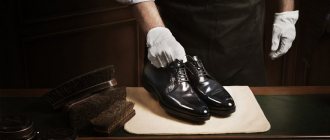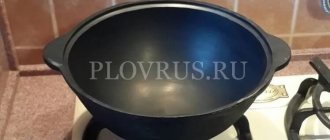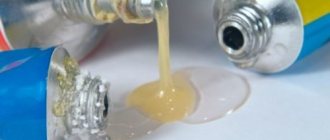A glass-ceramic stove is the dream of any housewife. But this is at first glance. For an aesthetic appearance and almost instant heating, you have to pay for the hassle of care.
To ensure that your beautiful stove remains clean longer and that nothing gets spoiled, experienced housewives suggest following these tips. Perfect cleanliness in the kitchen is guaranteed!
Glass ceramics are a fragile thing and require care.
Tips from this list were collected from housewives from all over the world. They will greatly facilitate the maintenance of an induction hob with a glass-ceramic surface. And at the same time they will help you save money on the purchase of special cleaning products and scrapers.
Safe chemistry
Cleaning product
When choosing a cleaning product, carefully read the composition of the product. The main function of silicone is to create a protective surface that simplifies the removal of grease and prevents subsequent contamination.
Selena-extra. The product removes old fat. Shake the product before applying. The small amount of silicone present in the composition does not provide the proper cleansing effect.
Domax is an ideal product for daily cleaning of the stove. Removes stains, simple stains, cannot cope with old stains, requires the use of additional products. In terms of its action, it is an excellent surface polishing agent (it contains a larger amount of silicone). Any tiler will appreciate this type.
Dr. Beckman - copes well with fresh stains. If you need to remove dried stains, apply the product for a few minutes. There are no strong chemicals in the composition and does not irritate the skin of the hands.
Attention! With regular use, it creates a film coating that prevents the formation of dirt.
About dishes
Do not be lazy to study the instructions, as most likely there will be information about the optimal position and diameter of the dishes. Questions about what shape and size kitchen utensils should be usually do not arise. Buyers are often concerned about what material frying pans, pots and kettles should be made of.
Manufacturers recommend that lucky owners of glass-ceramic stoves purchase stainless steel cookware. Moreover, it is better if the steel is marked 18/10. This is the most reliable utensil. Why? Everything has to do with the composition of the material. Chrome and nickel guarantee high wear resistance and hardness. You can also use enamel pans, the main thing is not to leave them empty on the stove. This may cause permanent damage to the glass ceramic surface.
When purchasing cookware, you should definitely pay attention to the bottom, which should be as flat as possible, as well as multi-layered. Only thick-bottomed dishes will not deform when heated
Experts advise choosing pots and pans with dark matte bottoms, as they conduct heat better.
It is important for owners of stoves with induction burners to know that such models heat the dishes with eddy currents created by a magnetic field. Thanks to this, the surface of the stove practically does not heat up.
When purchasing pots and pans for an induction cooker, it is important to pay attention to the presence of a magnetic bottom, without which the cookware simply will not heat up. It is very easy to check whether the bottom has magnetic properties or not. Take a small magnet to the store; if it sticks to the bottom, then you can safely buy the dishes you like
Please note that utensils for induction cookers are made only from cast iron, stainless steel and aluminum (a special bottom is installed in aluminum cookware), so there is no point in considering other options
Take a small magnet to the store; if it sticks to the bottom, then you can safely buy the dishes you like. Note that utensils for induction cookers are made only from cast iron, stainless steel and aluminum (a special bottom is installed in aluminum cookware), so there is no point in considering other options.
It is not recommended to use pots, kettles, frying pans and other utensils used on traditional stovetops. Why? The fact is that in this case there was uneven heating of the bottom. As a result, the latter was deformed.
You should also avoid using pans with aluminum and copper bottoms. When heated, the materials melt and leave stains on the glass-ceramic surface, the fight against which is very difficult. It is not entirely convenient to use glass-ceramic and heat-resistant glass utensils, since they take a long time to warm up and cool down slowly.
The cookware has been selected, but in order for the stove to serve for a really long time, it is important to remember three important rules: The diameter of the cookware must be equal to or greater than the diameter of the burner. The burner should be turned on after placing a frying pan or saucepan on it.
Before placing dishes on the stove, you should always check that the bottom is completely clean and dry.
Utensils according to the compatibility of the panel with the material of the utensil
When buying a new stove, housewives often change pots and pans, and wonder whether it is possible to put ceramic dishes on a ceramic stove?
You can set a certain heating power of the burner, and it will increase or decrease its power independently.
Depending on what heating elements your stove is equipped with, you need to choose cookware; now manufacturers put compatibility markings on their products, which will allow you to navigate the variety of types.
As a rule, cookware for classic stoves is more varied than for induction glass-ceramic models.
The main thing is that if you have a combination model, choose dishes that can be combined with different heating elements. The best choice would be metal cookware that is compatible with induction and electric heating.
When choosing a particular cookware, you should pay attention to the features of the production material, functionality and bottom thickness
Act now
It happens that even the most careful and attentive housewives may not keep track of everything during active culinary experiments. Therefore, it cannot be excluded that plastic objects, sweet ingredients of dishes, baking foil and other things may come into contact with the glass-ceramic surface, which can spoil the appearance of the stove. If something like this occurs, the advice from experts is clear - act immediately. Remove any dirt or foreign objects using a glass ceramic hob scraper. If you hesitate, they can melt and damage the glass ceramics.
Also, make it a rule to apply a glass-ceramic hob cleaner to the surface before starting to prepare sweet dishes. The product leaves behind a protective film that can protect the coating from getting sweets on it.
Glass ceramics is a fairly strong material, but still requires careful handling. Proper care of the surface and careful operation of the stove will preserve the attractive appearance and performance of the device for a long time. As a result, by following simple rules and adhering to the advice of experts, using a glass-ceramic stove will be a pleasure.
Necessary tools and tools
To help the housewife remove baked sugar, use a scraper or razor. It is not advisable for other molten substances (plastic, foil and other melting materials) to come into contact with the surface. It is better to remove them gradually. A special slab scraper is suitable for these needs. And if a similar tool is not available, the use of a razor (only a new one) will be an irreplaceable thing.
A cheap product that can be prepared at home can remove any stain from the surface of a glass-ceramic stove:
- Dishwashing liquid;
- Baking soda;
- Hydrogen peroxide.
The prepared composition will quickly remove stains from the capricious surface of the stove.
The stove is sprayed with dishwashing detergent, a few soda crystals sprinkled in, and finally a few drops of peroxide are added. Wait a few minutes, wipe the surface with a soft sponge, using circular movements.
Attention! For cleaning ceramics, household chemical compounds containing alkalis and acids that can damage the hob are not used.
Cleaning the glass-ceramic surface takes place in several stages:
- Removing old stains and dirt using mechanical means;
- Cleansing using liquid products and special sponges.
For surface cleaning the following are applicable:
- Special scraper. The scraper has a handle-holder made of plastic or metal;
- Blade - movable or fixed;
- Screw - used to replace the blade or fix it in the required position.
Scraper
Scraper
The scraper blade must be replaced as it becomes dull, which is determined by the effort required to remove stains.
When to buy:
- There is a significant amount of contamination;
- You need to quickly remove burnt food before the stove cools down;
- Preventing scratches on the surface.
How to use:
- Wipe the contaminated surface with a flannel cloth;
- Wait until completely dry;
- Place the tool at an angle of 30 degrees, make movements in the forward-backward direction;
- When finished, wipe the stove with a clean cloth.
Important! The cost of the tool varies depending on the material and manufacturer. The price of plastic ones is 200 rubles, metal ones are 400-600 rubles.* Replacement blades have a similar cost.
Napkins and sponges
Melamine sponge.
Products have appeared on the market that perform the functions of a rag used to clean an electric stove, and a cleaning agent for the hob - a melamine sponge.
The main secret is a special impregnation, which acts as a cleaning agent.
The main raw material for production is melamine resin, which after the expansion process becomes porous. Externally - a light block, which is similar to ordinary foam rubber. The hardness of melamine is similar to the strength of glass, and the abrasive properties are identical to emery. The secret to efficiency is the product’s production technology.
The sponge is moistened with water and cleans the surface. The product is effective in removing difficult stains. The sponge removes any remaining cleaning agent and wipes the hob dry.
Attention! The sponge should not be used for washing dishes.
Helpful tips for keeping your induction hob clean
- It is recommended to wipe the stove with a soft cloth and a special cleaner every day to avoid old stains.
- You can clean the stove only after it has completely cooled down, otherwise streaks may appear on the glossy surface.
- If there is noticeable dirt on the induction panel and you plan to turn it on in the near future, it is better not to do this. First, you should remove the stains and only then start cooking, since otherwise the remnants of previous culinary experiments can literally “weld” to the surface.
- It is strictly forbidden to use any abrasives, both chemical and natural (soda, mustard, etc.). Even the smallest grains leave scratches on the glossy glass ceramics, and it will be impossible to get rid of them later. If the question arises “how to clean an induction cooker?” - choose Schumanite for glass ceramics, and your kitchen will always be in order.
- To care for the stove, you should use a separate cloth, for example, lint-free microfiber, or use disposable towels. Hard sponges with a pronounced texture, brushes and steel wool - all this cannot be used so as not to damage the surface. Moreover, you should not use soft sponges with which you wash dishes or wipe tables - crumbs and particles of detergents may remain on them, which are contraindicated for induction cookers.
Best Cleaning Methods
You can clean the glass-ceramic stove using one of the specialized products, for example, Top House. This is a thick paste with silicone additives that make it impossible for dirt to stick to the panel and make subsequent cleaning easier.
After application, the product is wiped off the hob almost immediately after 3-5 minutes with a damp cloth so that a strong film of silicone does not form, which will then be difficult to remove.
All cleaning products have a fairly aggressive composition, so their exposure time on the stove should be minimal to avoid damaging the glass ceramics. Household chemicals must be used strictly in accordance with the manufacturer's instructions.
The basic rule for any cleaning: washing is done in three steps:
- stains and dirt are removed with detergents;
- the remaining chemicals are thoroughly washed off;
- The plate is wiped dry, after which its surface is polished.
Rules for using an electric oven
For both the top of the stove and the electric stove oven, there are instructions for proper use.
There are two types of ovens - without a thermostat and with a thermostat. Temperature adjustment in both is carried out as in a conventional stove.
Still, you need to know some nuances in handling an electric oven.
- If you find it difficult to determine the temperature in the oven, find a white sheet of paper on your desktop. Place it in the middle of the baking sheet and place it in the middle of the oven. At high temperatures, the paper turns brown after 3 minutes, at low temperatures - 10 minutes after turning on the oven.
- Baking, roasting and stewing are carried out in two temperature modes: the first half of the process - at the highest t C⁰, the second half or third of the time - at the lowest temperature or in residual heat with the stove turned off.
- Bake and simmer in an electric oven in the center of a baking sheet on the middle shelf (NOT on the top).
- You can boil vegetables or broths on the bottom shelf.
- To cook in an electric stove, we use ceramic dishes, dishes made of plain or cast iron, or refractory clay. You can use foil, while wrapping the product in a double layer, which will help prevent it from breaking and prevent liquid (juice) from leaking out.
- Place the pastries and bread in a preheated oven. If you plan to simmer the dish for a long time, you can put it in a cold oven.
- After half the cooking time, the oven door should be opened slightly. For example, we bake dishes for an hour - after half an hour we open the door a little, starting from 40 minutes, we open the oven completely.
Folk remedies
Below are popular folk remedies for caring for glass ceramics.
Vegetable oil
Works great on tough and old stains. Saturate the sponge with a small amount of the substance, leave it on the stain for 30 minutes, after which you can remove the stain;
Baking soda + lemon juice
Make a paste by diluting baking soda with liquid. This paste is applied to burnt fat and burnt food. The applied composition remains on the surface for 15 minutes, after which it is removed with a soft cloth. If the contamination is strong, add lemon juice to the soda paste. After some time has passed after applying the composition, grease stains are destroyed and can be easily removed;
Vinegar 9%
Benefits: disinfection of equipment and cooking tools. The solution, vinegar and liquid, in equal proportions, are applied to the surface with a sprayer. Wipe with a paper towel.
More on the topic “Cleaning the stove: induction, glass-ceramic. What detergents should I choose?
Praise the induction tool
An ordinary sponge with dishwashing detergent, then a wet rag and dry it. If anything sticks, use cleaning milk. We have two glass-ceramic burners, two induction, a combination stove, so the induction ones are ideally clean, but the regular ones need to be scraped.
Premium built-in home appliances from LG: looks great - cooks smart
LG Electronics (LG) has announced a premium line of built-in household appliances for the Russian market, embodying the ideal combination of design and functionality so necessary for the modern rhythm and lifestyle. All products in the new family are specially designed and manufactured to be part of a complete kitchen appliance package, which includes everything you need to keep food fresh for a long time, as well as to prepare the most delicious dishes...
Premium home appliances from Samsung
As part of the Samsung Art of House film festival, a new line of premium household appliances was presented. The event was held in Teatralny in the style of a film awards ceremony. The host of the evening was Russian actress Valeria Lanskaya. Nine short films by emerging Russian directors were shown, who drew inspiration from the features of Samsung household appliances. The works of festival participants can be viewed here. A new premium...
Glass ceramics or circles (pancakes)????
I also choose an electric stove, but >. glass ceramics - induction. A friend's mother-in-law has arrived. I started cooking on glass ceramics as if I were cooking on gas - the stove burst. The glass ceramics are in their 7th year... Easier to clean than pancakes. Sugar... well, it happened a couple of times - so I cleared it right away and that’s it.
Help! Gas hob.
I have Bosch, just glass ceramics with large cast iron grates, just black. I don’t see anything capricious - I wash it with the usual products for glass ceramics and dishwasher racks. If I had thought about this during the renovation, I would have chosen a different stove model.
Who has dishes for glass ceramics?????I’m crying(((((
Induction cookers may have a glass-ceramic surface. Cleaning agent for glass ceramics - Schumanit, for example, and also buy a scraper and replacement blades for it - and everything will be cleaned.
How to clean tape and a question about a glass-ceramic stove.
Section: Cleaning (glue the glass-ceramic stove). How to clean tape and a question about a glass-ceramic stove. Even now, with a regular slab of detergent, I have enough detergent for six months 09/16/2009 21:48:45, Beatrice. There is one ironclad rule for induction cookers...
How to clean glass ceramics?
How to clean glass ceramics? Tell me, who cleans the stoves with what? Do you mean glass-ceramic? In the same place as glass ceramics. There are also cleaning products. I bought at the Prague market (where electronics and household appliances are).
Glass ceramic hob, maintenance.
Glass ceramic hob, maintenance. Tell me how to get rid of “rainbow” stains on the glass-ceramic surface of the stove. Glass ceramic cleaning products cannot be removed (I used Bagi, Komet, Pemolux-cream)).
Stupid question about hobs
I didn't want any edging either. In the end, I chose one with a edging, but made of the same glass ceramic as the surface itself. For now, only stove cleaning agent gets into the gap near the edging :)) I wipe it off. You need to wash it often, don’t let it run. 03/10/2005 13:16:28, Murzya.
Glass ceramic cleaner
Section: Washing, cleaning. Product for glass ceramics. How do you wash/protect your glass-ceramic panel? Dosya cleaning cream costs 20 rubles. It doesn’t seem to create a protective film, but even without it, I wash the stove just in case, and I’m not going to perform a feat, as was the case with...
How to clean an electric stove?
There is a product called SANITA-gel. how to clean this stuff. I like 11/24/2003 10:55:46 pm, Musya & Gusya. Rules for caring for glass ceramic hobs. how to get rid of it? lll. Which sink would you choose? Vitamin.
Cooking temperature in an electric stove oven
If your oven has a thermostat, we suggest using the following temperature chart for cooking foods.
| Products | Cooking temperature on an electric stove |
| Meringue, meringue | 100 – 150 С˚ |
| Choux pastry, kefir dough (gingerbread) | 140 C˚ |
| Shortbread dough (cookies) | 160 C˚ |
| Salt dough (small hard cookies) | 180 C˚ |
| Butter and Viennese dough | 190 C˚ |
| Biscuit dough | 190 C˚ |
| Bakery products (bread, loaves) | 200‑210 С˚ |
| Butter buns | 200‑250 С˚ |
| Slow baking of crusts on products, baking of pates, pastes, soufflés | 170 C˚ |
| Boiling fish | 150‑170 С˚ |
| Beef fillet | 150‑160 С˚ |
| Pork fillet | 170 C˚ |
| Simmering (quenching) with decreasing temperature | From 250 C˚ |
| Quick coloring (giving the dish a golden crust) | 200‑250 С˚ |
| Stewing food | 150‑170 С˚ |
Scratches on the hob: how to remove baking soda?
White powder can be found in any kitchen. This proven product will make polishing quick and easy.
How to remove scratches:
- Mix 1-2 teaspoons of baking soda with water to form a paste.
- Apply to the damaged area, cover with a damp towel.
- After 10-15 minutes, wipe in a circular motion.
- Rinse off any remaining residue.
- Wipe dry.
To restore shine, wipe with a cotton pad soaked in a 6-9% solution of table vinegar.










